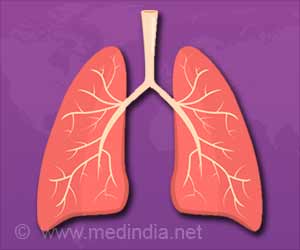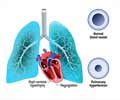New study describes the benefits of in-home noninvasive ventilation therapy, which includes a type referred to as bilevel positive airway pressure (BiPAP) for many patients with chronic obstructive pulmonary disease (COPD).

‘COPD patients who used BiPAP have reduced mortality, fewer hospital admissions, lower risk of intubation, improved shortness of breath, and fewer emergency department visits.
’
Read More..




Many people who have COPD suffer from hypercapnia, the retention of carbon dioxide a waste product of metabolism normally expelled by the lungs as a person breathes. This may lead to acute respiratory failure and hospitalization. One treatment for chronic hypercapnia is noninvasive ventilation or a machine with a mask that helps to improve breathing. Read More..
Michael Wilson, M.D., a pulmonary and critical care physician at Mayo Clinic, led the study, which was funded by the Agency for Healthcare Research and Quality under a contract with the Mayo Clinic Evidence-Based Practice Center.
"Although there is ample evidence supporting in-hospital use of breathing devices such as BiPAP, until now, we didn't know which benefits may be available when we send people home with a new piece of equipment," says Dr. Wilson. "There were indications that at-home therapy might be beneficial, but there were conflicting studies and guidelines as to what would be best for our patients."
He and his colleagues wanted to determine the best practice, collecting and summarizing all available medical knowledge surrounding the topic. To that end, the team conducted a meta-analysis, combing all available peer-reviewed and other expert literature for relevant randomized clinical trials and comparative observational studies.
After reviewing more than 6,300 citations, the researchers found 33 studies evaluating outcomes for 51,085 patients with COPD and hypercapnia who were followed for at least one month while using a noninvasive ventilator at home during nighttime sleeping hours.
Advertisement
"While there does seem to be some clear benefits to using devices such as BiPAP, we should be cautious as the studies included a lot of different types of patients with COPD. And many of the studies we evaluated were low or moderate in quality," says Dr. Wilson. "We still have a lot more to learn about which machine settings are best for different types of patients. In addition, although many studies in our review included quality of life measurements, we didn't see an improvement. While some studies showed better quality of life, other studies showed no difference. Again, this points to the importance of needing to evaluate which patients with COPD may receive the benefit more carefully."
Advertisement
Source-Eurekalert















